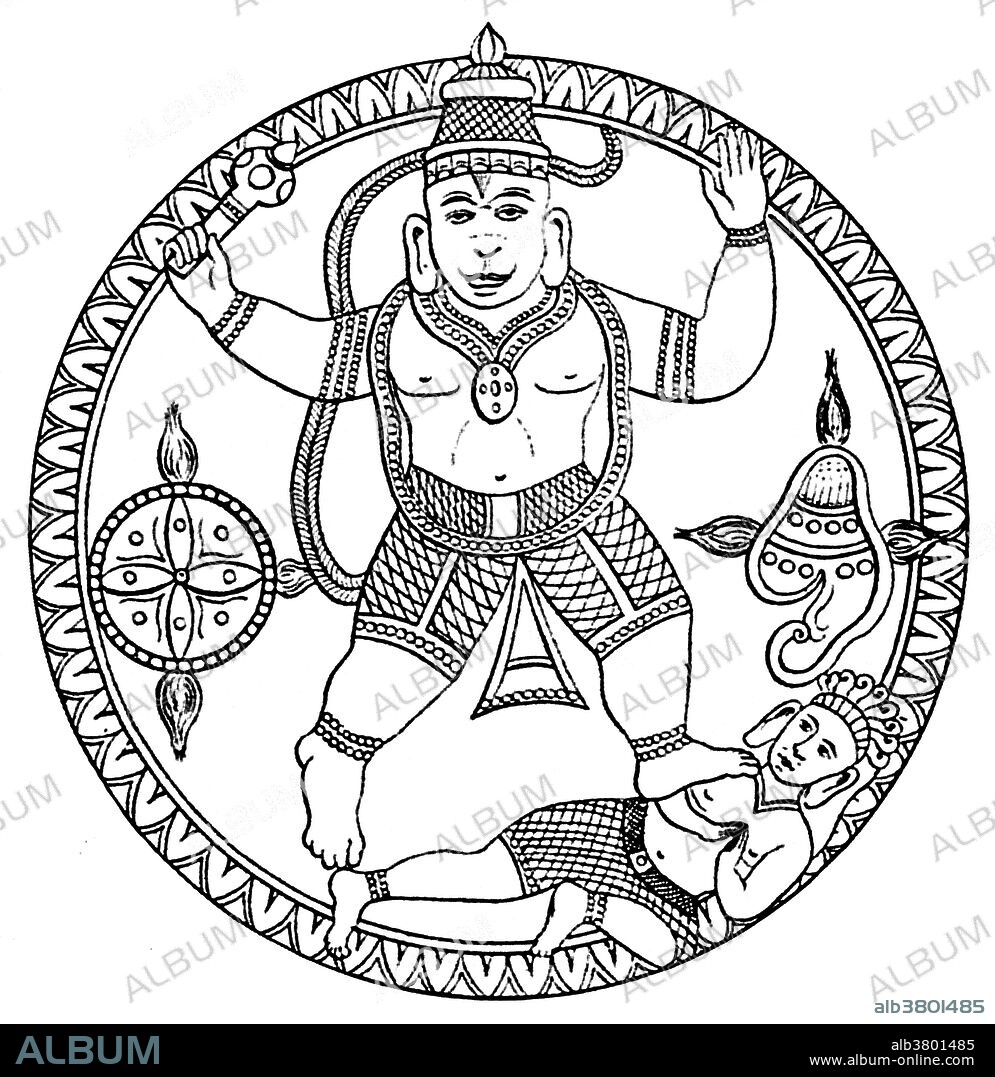alb3801485
Hanuman, Hindu Monkey God

|
Ajouter à une autre Lightbox |
|
Ajouter à une autre Lightbox |



Avez-vous déjà un compte? S'identifier
Vous n'avez pas de compte ? S'inscrire
Acheter cette image

Titre:
Hanuman, Hindu Monkey God
Légende:
Voir la traduction automatique
Hanuman, together with Ganesha and Garuda, is one of the three principal animal deities in the Hindu Mythology that has evolved after the Vedic Period in Indian history. He is loved all over India as the monkey-god who so faithfully served Rama, Vishnu's seventh avatar (incarnation), in his war against Ravana, the demon king. Hanuman is a major deity in North India where he is regarded as a propitiator against all evil. Temples to him have been erected all over that part of the country each small villages and towns having their own Hanuman shrine to keep the populace within the ambit of his able and benign prowess. The monkey god is the son of Vayu, the wind god, and Anjana, an apsara who was turned into a monkey by a curse.
Crédit:
Album / Science Source / New York Public Library
Autorisations:
Modèle: Non - Propriété: Non
Questions sur les droits?
Questions sur les droits?
Taille de l'image:
3736 x 3843 px | 41.1 MB
Taille d'impression:
31.6 x 32.5 cm | 12.5 x 12.8 in (300 dpi)
Mots clés:
CÉLÈBRE • CELEBRITE • HIDOUISME • HINDOUE • HINDOUISME • ILLUSTRATION • INDIEN • INDIENNE • INDIENS • MONOCHROME • MYTHIQUE • RELIGION
 Pinterest
Pinterest Twitter
Twitter Facebook
Facebook Copier le lien
Copier le lien Email
Email
